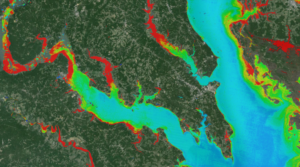Speaker Biography: Steve Covington started his career literally in the middle of a corn field in South Dakota working at the U.S. Geological Survey’s Earth Resources Observation and Science (EROS) Center. It was at this world-class science and satellite data processing and distribution facility in 1984 that he watched the launch of Landsat 5 on closed circuit TV, not realizing the role it would play in his future. After several more years at EROS, Steve moved back east and discovered how risky a venture company could actually be before spending several years as the Production Director for a French satellite company’s U.S. subsidiary. Since 1995, Steve has worked at the Aerospace Corporation on contract to the USGS first as the liaison between the USGS and NASA during the development and launch of the Landsat 7 mission, then as a Landsat 7 Flight Systems Manager before adding Landsat 5 to his portfolio in 2001. Twelve years later, Steve now finds himself as the longest-running Flight Manager for Landsat 5 in its 29-year history, now working with the flight team to ensure a dignified end to a remarkable mission.

Be Part of What’s Next: Emerging Applications of Landsat at AGU24
Anyone making innovative use of Landsat data to meet societal needs today and during coming decades is encouraged to submit and abstract for the upcoming “Emerging Science Applications of Landsat” session at AGU24.





